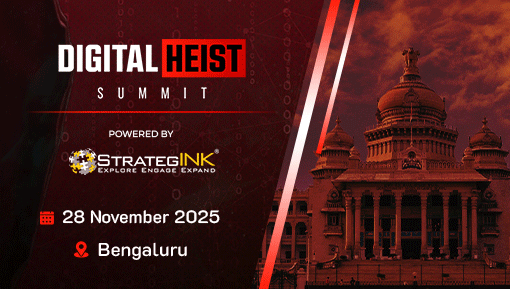
India’s cloud adoption is accelerating at an unprecedented pace, driven by digital transformation, generative AI advancements, and multi-cloud strategies. With India’s public cloud services market projected to reach $25.5 billion, boasting a compound annual growth rate (CADR) of 24.3% by 2028 [1], regional enterprises are rapidly embracing cloud technologies for agility, scalability, and operational efficiency. However, this surge also expands the attack surface, introducing heightened security risks that demand real-time threat detection. As organisations navigate this evolving landscape, adopting advanced, cloud-native security measures will be critical to safeguarding India’s cloud-first future.
Indian enterprises are embracing software-as-a-service (SaaS) and increasing their adoption of cloud-native technologies like containers and Kubernetes [1]. Yet, as businesses scale, so do cyber threats. The Sysdig Threat Research Team’s 2024 Global Threat Year-in-Review highlights two cloud-centric concerns: the speed of cloud attacks and their soaring financial impact. The average cost of a cloud breach in 2024 was $5.17 million—$1 million more than on-premises breaches [2]. In addition, attackers can exploit cloud vulnerabilities and execute breaches in under 10 minutes, outpacing traditional on-premises security tools built to defend against 10-day attacks [3]. However, given advancements in mature capabilities such as vulnerability management and AI workload security, Sysdig found that organizations with real-time security practices are well-equipped to handle continuously evolving cloud threats.
Addressing Cloud Security Challenges
Balancing cloud innovation with proactive security is increasingly complex. The rapid adoption of cloud-native technologies expands the attack surface, making visibility, compliance, and threat response top priorities. Traditional security models, which rely heavily on prolonged and reactive detection and mitigation times, are insufficient in cloud environments where attacks unfold within minutes.
Security transparency and collaboration across DevOps and SecOps teams are also essential for understanding and mitigating real-world threats. For cloud security, prevention alone isn’t enough—organizations must adopt an “assume breach” mindset. This requires both proactive and reactive security processes, ensuring that enterprises can detect and respond to threats swiftly without disrupting business operations. A proactive, cloud security-first approach that leverages automated incident response actions and continuous monitoring is key to staying ahead of attackers; therein lies the power of runtime insights, an understanding of what is actually in use in production workloads.
Future-Proofing India’s Cloud Security
India continues to be a leader in technology and innovation, and Sysdig is pleased to support the country as it accelerates its digital initiatives to drive cloud growth. However, security must remain a top priority to ensure that cloud adoption does not come at the cost of increased cyber risks. Recognising this, Sysdig launched India’s first real-time cloud security SaaS instance in 2024. This initiative ensures that Indian enterprises can safeguard their cloud while meeting stringent data sovereignty and compliance requirements.
As cloud attacks grow in sophistication, Indian businesses must embrace a cloud security-first mindset—one that prioritises real-time protection, deep visibility, and automated response. With Sysdig’s investment in India, governments and enterprises now have the tools they need to secure their cloud transformation and drive innovation forward.
[1] IDC; Indian Public Cloud Services Market to Reach $25.5 Billion by 2028, Growing at a CAGR of 24.3%; December 2024
[2] Sysdig; 2024 Global Threat Year-in-Review; October 2024
[3] Mandiant, part of Google Cloud; M-Trends 2024; May 2024






